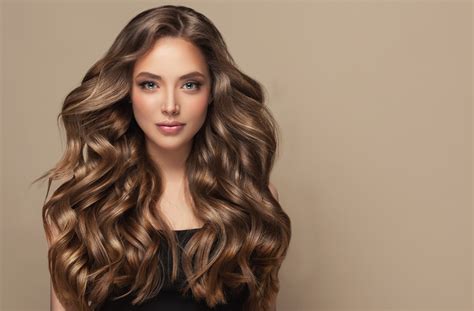Introduction
Clip on hair extensions have become an increasingly popular choice for individuals looking to enhance their hair volume, length, and style. These hair extensions are easy to apply and remove, making them ideal for a quick and temporary hair transformation. This article explores the world of clip on hair extensions, providing a comprehensive guide to their benefits, types, application, and maintenance.

Benefits of Clip on Hair Extensions
- Instant Transformation: Clip on hair extensions offer an instant hair makeover without the commitment of permanent extensions.
- No Damage to Natural Hair: Unlike other extension methods, clip on extensions do not require glue or heat, eliminating any potential damage to natural hair.
- Versatility: Clip on extensions come in a wide range of lengths, colors, and textures, allowing for customization to suit any style.
- Convenience: Clip on extensions are easy to apply and remove, making them a convenient option for everyday use or special occasions.
- Affordable: Compared to other hair extension methods, clip on extensions are a relatively affordable option, making them accessible to a wider range of individuals.
Types of Clip on Hair Extensions
- Synthetic Clip on Extensions: Made from synthetic materials, these extensions are affordable and available in a wide variety of colors and textures. However, they may be less durable and heat-resistant compared to natural hair extensions.
- Human Hair Clip on Extensions: Derived from human hair, these extensions offer a more natural look and feel. They are more durable and heat-resistant, but they are also more expensive than synthetic extensions.
How to Apply Clip on Hair Extensions
- Divide Your Hair: Part your hair into sections to create an area for clip placement.
- Position the Clip: Open the clip and position it as close to the root of your natural hair as possible, ensuring it is secure.
- Close the Clip: Gently close the clip, using a squeezing motion to ensure it is securely attached.
- Repeat: Continue applying clips throughout the desired area, adjusting the distance between clips for a natural look.
Maintenance of Clip on Hair Extensions
- Brush Regularly: Brush the extensions gently with a detangling brush to remove tangles and distribute natural oils.
- Wash Sparingly: Wash the extensions sparingly, using cold water and a gentle shampoo. Avoid using harsh products or heat styling tools.
- Condition Regularly: Apply a leave-in conditioner to the extensions after washing to keep them hydrated and prevent dryness.
- Store Properly: When not in use, store the extensions in a cool, dry place to prevent damage.
Addressing Pain Points
- No Permanent Solution: Clip on hair extensions are not a permanent solution for hair loss or thinning. They must be removed before going to bed or participating in activities that involve heavy hair movement.
- Limited Styling Options: While clip on extensions provide versatility in length and color, they may limit styling options compared to natural hair. It is important to use gentle styling techniques to avoid damaging the extensions.
- Maintenance Costs: Although clip on extensions are relatively affordable initially, ongoing maintenance costs, including washing, conditioning, and occasional replacement, should be considered.
Motivations for Using Clip on Hair Extensions
- Special Occasions: Enhance hair volume and glamour for weddings, proms, and other special events.
- Hair Loss or Thinning: Provide temporary volume and coverage for individuals with hair loss or thinning hair.
- Style Experimentation: Experiment with different hair lengths, colors, and textures without committing to permanent changes.
- Confidence Boost: Boost confidence by enhancing hair appearance and creating a more polished look.
Step-by-Step Application
- Determine the desired volume and length of the extensions.
- Part the hair and create sections where the clips will be placed.
- Open the clip and place it as close to the root of the natural hair as possible.
- Close the clip securely, ensuring it is firmly attached.
- Repeat steps 3-4 until the desired volume and length are achieved.
- Style the extensions using gentle techniques to avoid damage.
Pros and Cons
Pros:
- Quick and easy application
- No damage to natural hair
- Versatility in length, color, and texture
- Affordable option
Cons:
- Not a permanent solution
- Limited styling options
- Ongoing maintenance costs
Table 1: Types of Clip on Hair Extensions
| Type | Material | Durability | Heat Resistance | Cost |
|---|---|---|---|---|
| Synthetic | Synthetic fibers | Less durable | Low | Affordable |
| Human Hair | Human hair | More durable | High | More expensive |
Table 2: Maintenance Guidelines for Clip on Hair Extensions
| Activity | Frequency | Purpose |
|---|---|---|
| Brushing | Regular | Remove tangles and distribute oils |
| Washing | Sparingly | Cleanse and remove dirt |
| Conditioning | Regular | Hydrate and prevent dryness |
| Storage | When not in use | Prevent damage and prolong lifespan |
Table 3: Motivations for Using Clip on Hair Extensions
| Motivation | Description |
|---|---|
| Special Occasions | Enhance hair for weddings, proms, etc. |
| Hair Loss or Thinning | Provide volume and coverage for hair loss |
| Style Experimentation | Try different lengths, colors, and textures |
| Confidence Boost | Improve self-esteem by enhancing hair appearance |
Table 4: Potential Pain Points with Clip on Hair Extensions
| Pain Point | Description |
|---|---|
| Not Permanent | Extensions must be removed before sleeping or strenuous activities |
| Limited Styling | Styling options may be limited compared to natural hair |
| Maintenance Costs | Ongoing costs include washing, conditioning, and occasional replacement |
Conclusion
Clip on hair extensions offer a convenient and versatile solution for individuals looking to enhance their hair volume, length, and style. Understanding the benefits, types, application, maintenance, and potential pain points associated with clip on extensions empowers individuals to make informed decisions and achieve their desired hair transformations.
